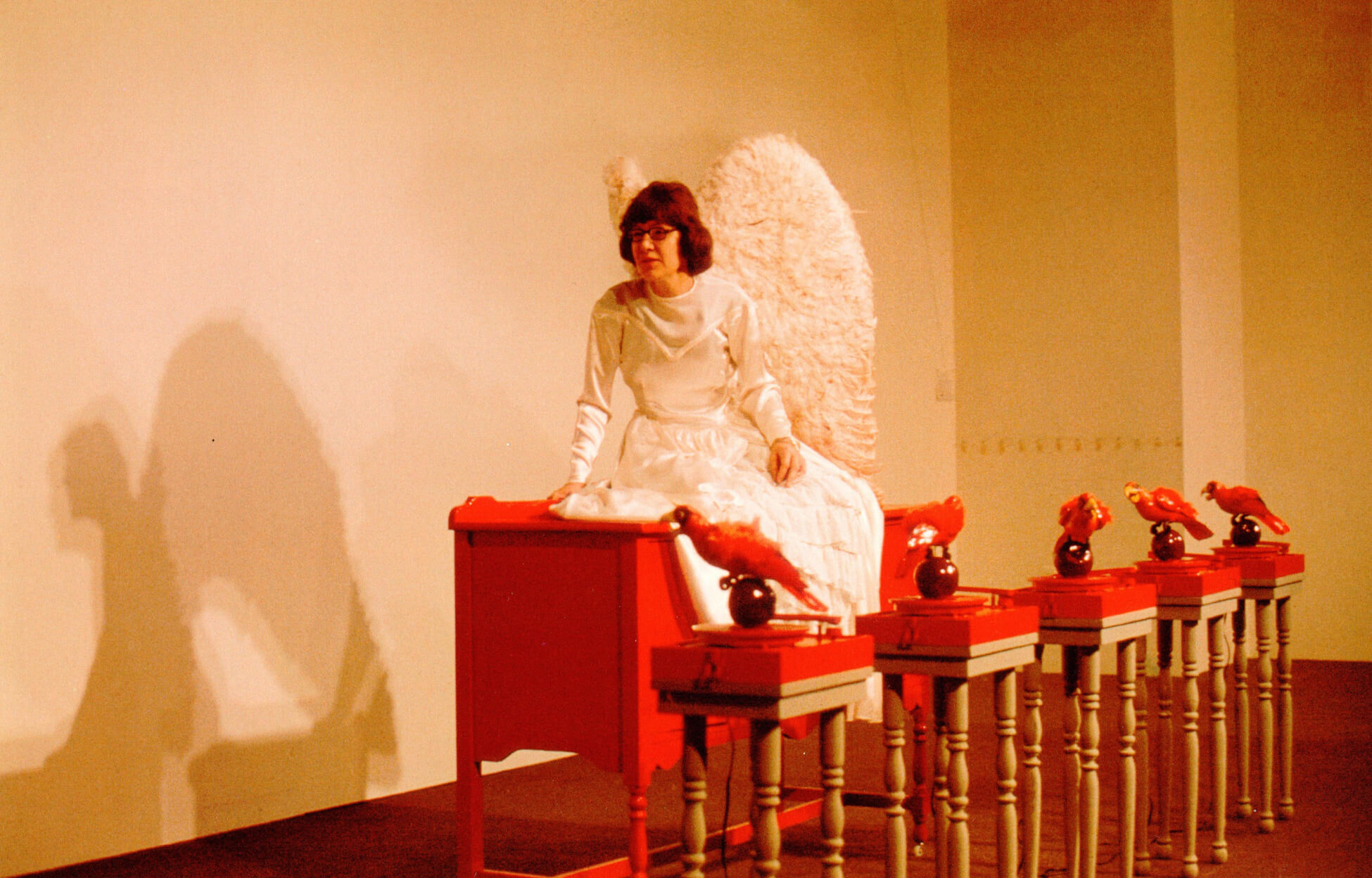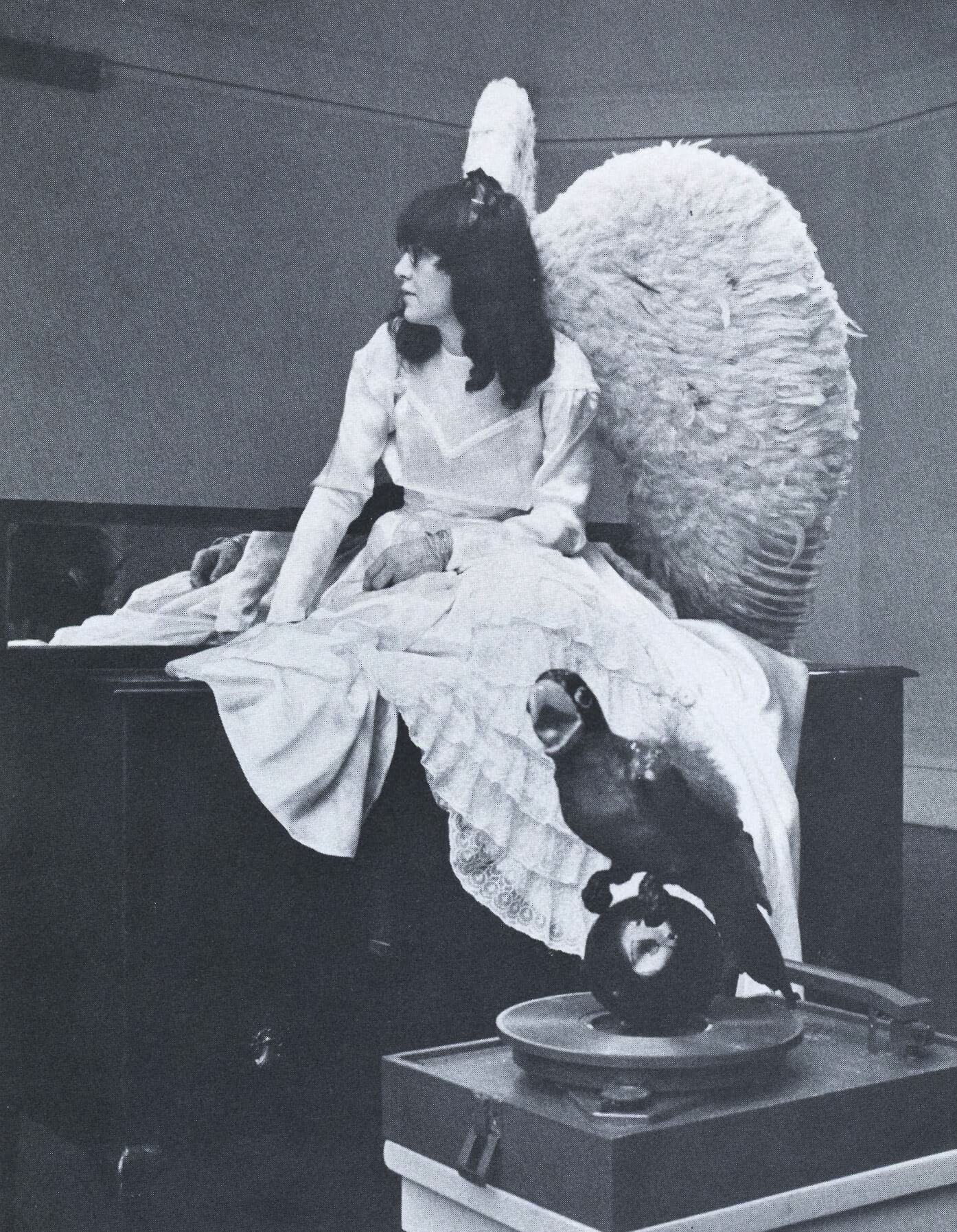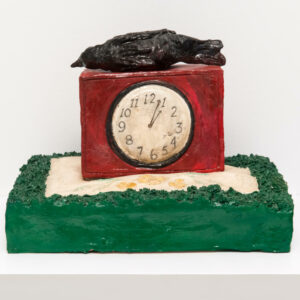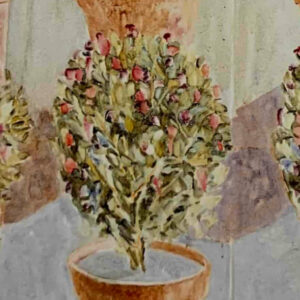Red Angel 1972

Gathie Falk, Red Angel, 1972
Performance at the National Gallery of Canada, Ottawa, in 1975
Photograph by Nomi Kaplan
Gathie Falk began creating performances in 1968, and Red Angel was one of her last. It conveys Falk’s interest in exploring musical strategies. Featuring a woman, five parrots, and a washing machine, it is essentially devised in rondo form—a musical composition that alternates between a principal refrain and contrasting episodes.
The parrots, sitting atop ceramic apples attached to turntables, and Falk, wearing a long white gown and oversized wings, sing “Row, Row, Row Your Boat” in the overlapping, repeated arrangement that is recognizable from childhood. Falk is the last to add her voice to the round. At the close of the song, Falk removes her white dress, revealing a grey satin one underneath. A second woman rolls in a wringer washing machine and proceeds to wash and wring out the white dress before leaving the stage. The piece concludes with a second performance of the parrots and Falk singing the round. This A-B-A pattern of the three scenes is the rondo form. Red Angel was first presented as part of an evening of performance work at the Vancouver Art Gallery in 1972, but it was not filmed at that time. It was recorded when Falk re-performed the piece at Western Front, Vancouver, on May 1, 1977.

Red Angel is premised in a surprising combination of images: stuffed parrots, ceramic apples, turntables, red silk tablecloths, evening gowns, and enormous angel’s wings. Falk’s choices might be interpreted as absurd, but she denies purposeful flagrancy. She has said, “To some spectators it seemed that all this effort was made with a view to toppling the usual order of things or that the aim was outrageousness. Not so. The activities I used belonged together in that mysterious way that all things in every strong work of art belong together.”
When Falk first performed the piece, critic Joan Lowndes, typically a great fan of hers, acknowledged how much work had gone into the props and costumes, but she felt that it “never took flight.” Yet, in its action, Falk’s reliance on the musical form gives the piece a particular shape—the rondo, or round—that makes the work easy to describe. It is perhaps for this reason, despite Lowndes’s early critique, that it has become Falk’s most published performance.
A Bird Is Known by His Feathers Alone, 1968—an earlier Falk work, made just six months after she attended a workshop by choreographer Deborah Hay (b.1941) of the Judson Dance Theater, New York—was more complex in its use of props and costumes and quite serpentine in the choreography of its actions. These actions included Falk washing her face and applying Rogers Golden Syrup to it; artist Tom Graff (active from the 1970s), Falk’s friend and sometimes performance partner, creating a large drawing with cold cream, lipstick, and powder; and other participants using their prone bodies to push plastic cocktail glasses filled with cherries and ceramic oranges across the stage. While Red Angel has a score that is premised in a certain clarity despite the absurdity of the actions, Lowndes described the earlier piece as “a study in process and randomness.”

 About the Author
About the Author
 More Online Art Books
More Online Art Books
 Acknowledgements
Acknowledgements